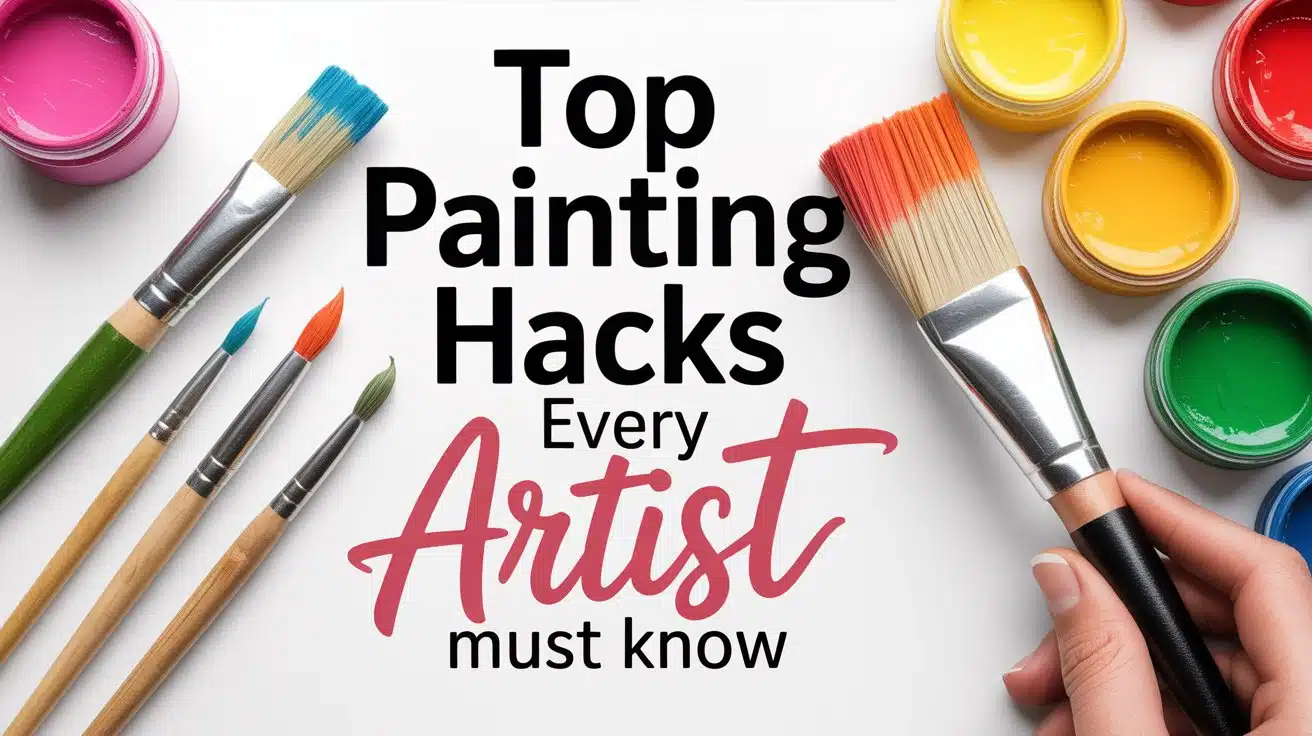Every painter knows that strange mix of joy and frustration that comes with a blank canvas.
You set out to create something beautiful, but then your wet paint dries too fast, your brushstrokes look uneven, or your colors start turning muddy.
I still remember one night when my acrylic paint dried halfway through a sky blend—I panicked, tried to fix it, and ended up with a messy gray cloud instead of the sunset I wanted.
That moment taught me something every artist should know: painting isn’t just about skill—it’s about smart tricks that make the painting process smoother.
Over the years, I’ve picked up countless small lessons, from how to prep a white canvas to how to make colors pop with better tools and techniques.
These painting hacks don’t just save time; they change how you work and think as a painter.
Key Takeaways
- Proper preparation ensures smoother, more controlled painting.
- Maintaining your brushes and tools saves money and time.
- Smart color mixing prevents muddy results and enhances depth.
- Simple application techniques improve texture and overall appearance.
- Creative hacks can save hours and turn mistakes into opportunity.
Preparation Hacks Before You Start Painting
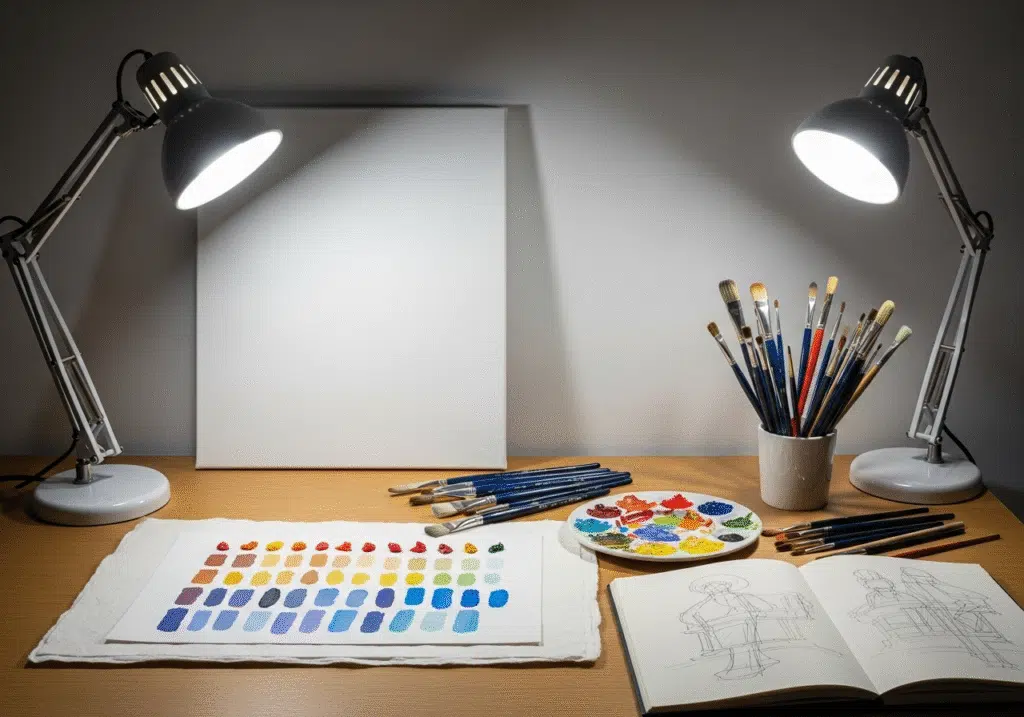
Good art starts long before the first brush touches the canvas. Preparation shapes everything — the colors, the texture, and even your mood while painting.
I used to rush through setup because I was eager to start, but my artwork always looked dull or patchy.
Once I learned to slow down and prep properly, my colors began to glow, and my painting technique felt smoother.
Here are a few painting hacks to set you up for success:
- Surface Prep: Wipe your canvas clean and apply a coat of gesso. It gives your paint a better grip and keeps it from soaking in too fast.
- Priming Technique: Use a tinted base instead of plain white. A light gray or warm tone helps balance cool colors and warm colors, adding depth to your underpainting.
- Color Testing: Always try a quick sketch or small swipe of color on scrap paper. It helps you see how opaque or transparent each medium looks when dry.
- Lighting Setup: Paint under natural light or use daylight bulbs. Poor lighting can trick your eyes and make your color theory decisions go wrong.
💡 Pro Tip: Photograph your palette before painting for color memory. You’ll remember your mixed media combinations later — perfect for consistent shades in future projects.
Brush and Tool Hacks
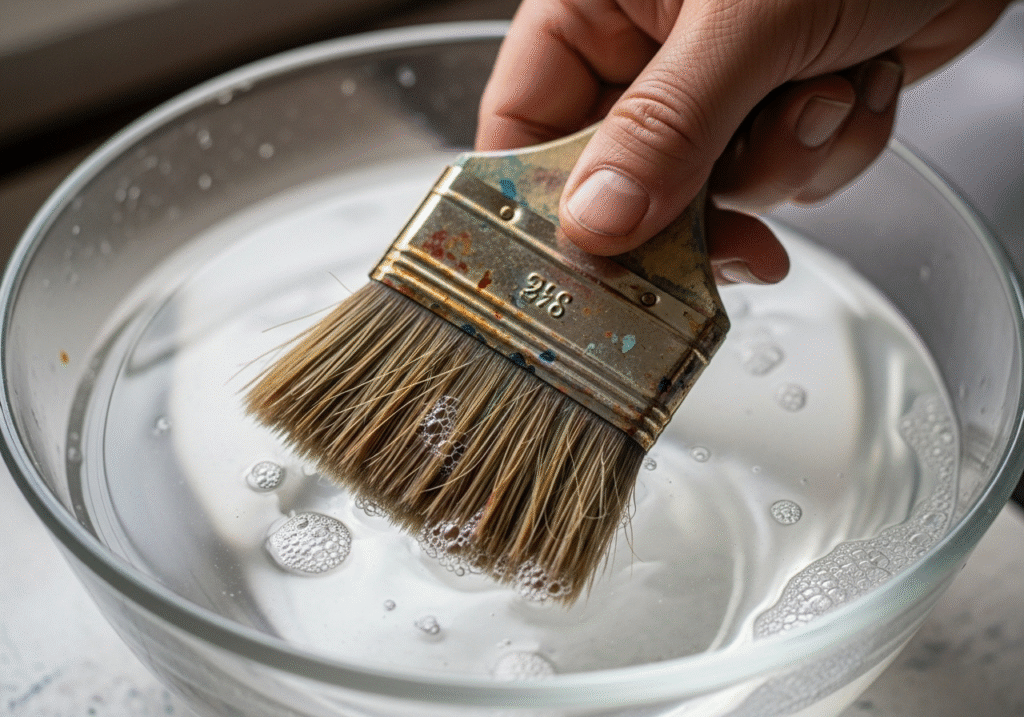
Your brush is more than a tool — it’s your voice on the canvas. But after a few painting sessions, it can turn stiff or lose shape.
I’ve had paint brushes so crusted with acrylic that they looked beyond saving. Then I learned a few simple tricks to bring them back to life.
Revive old brushes in 3 easy steps:
- Soak: Dip the bristles in warm water mixed with a little linseed oil or gentle soap. Let them soak for 10–15 minutes.
- Massage: Gently press the bristles with your fingers to break dried paint. Avoid pulling — it damages the fibers.
- Shape and Dry: Rinse well, reshape with your fingers, and dry flat to keep the tips smooth.
Sometimes, you don’t even need a traditional brush. Artists have found creative ways to make texture and depth using household items.
Try these handy alternatives:
- Sponge: Great for soft blending or sky effects in landscape painting.
- Palette knife: Perfect for adding bold texture and scraping multiple layers of color.
- Credit card: Ideal for creating sharp edges or quick sgraffito effects.
- Stump or tissue: Helps smudge pastel, ink, or pencil lines for smooth transitions.
- Painter Hack: Sometimes, consulting local painters Austin TX can give insight into unusual techniques or materials.
Experimenting with different tools can change how your artwork feels. Every painter should stay curious — some of the best discoveries happen when you stop worrying about rules and just play with what’s in front of you.
Paint Mixing and Color Hacks
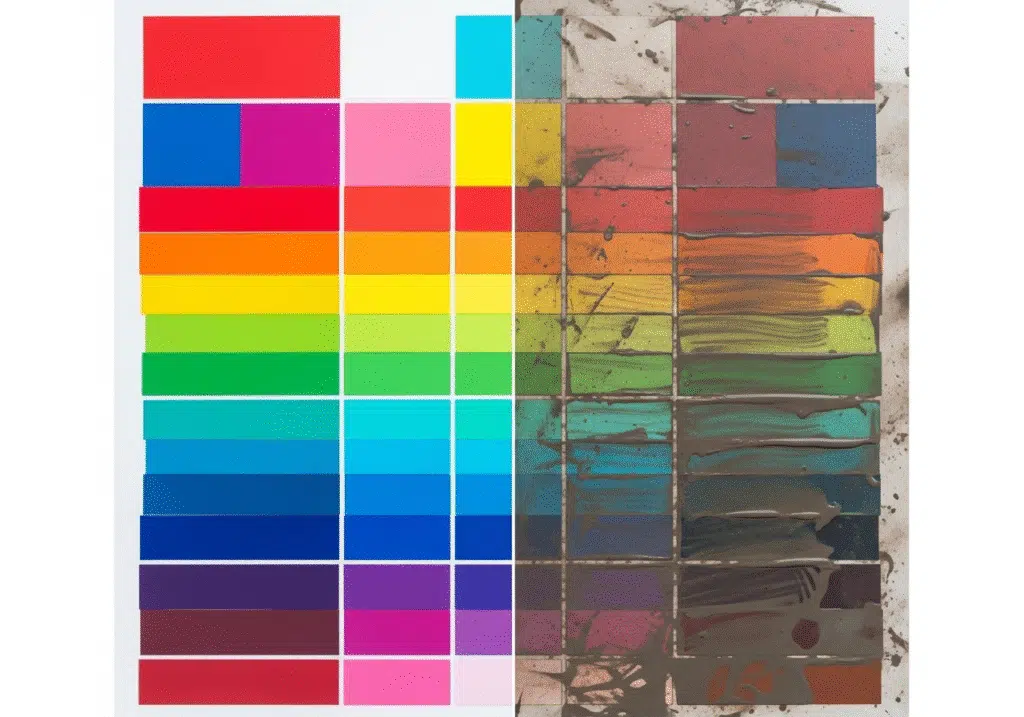
Color can make or break your artwork. It tells the story, sets the mood, and captures the heart of every piece.
When I started learning color theory, I realized how much emotion hides inside each shade. I remember struggling with oil painting once — my rich reds kept turning into brownish mud.
That’s when I understood that mixing isn’t just about color; it’s about control and awareness.
Every painter who wants cleaner tones and stronger vibrancy should focus on mixing smarter, not harder.
Here are a few painting hacks that every artist should know:
- Neutralizing Tones: Mix a color with its opposite on the color wheel to tone it down. For example, a touch of green can soften a strong red.
- Warm vs. Cool Balance: Combine warm colors and cool colors carefully. Warm hues bring energy, while cool ones create calm.
- Avoiding Muddy Colors: Never mix too many shades at once. Stick to two or three pigments. Overmixing makes paint lose vibrancy and creates dull results.
- Limited Palette Concept: Work with just a few main colors and mix from there. It makes your tones more unified.
- Light to Dark Rule: Always paint from light to dark. It helps control layers and keeps shadows realistic without burying your highlights under a layer of paint.

Color mastery turns chaos into harmony.
Application and Technique Hacks

Every painter has moments when their painting technique feels off — the strokes don’t blend, the surface looks dull, or the texture feels wrong.
I’ve been there too, wondering why a simple sky looked lifeless. The truth is, great results often come from small habits during application.
Dry Brush Magic: A dry brush gives texture and movement that a wet one can’t. Lightly load a bit of acrylic or gouache on a dry bristle and drag it gently across the canvas. It works well for rough surfaces, grass, or wood textures.
Underpainting Shortcut: Start with an underpainting using diluted cool colors or earth tones. It helps plan composition and values before you commit to full colors.
Glazing for Depth: Glazing adds richness and shine to your work. Mix acrylic or oil painting medium with transparent color, then apply it in thin coats. Each glaze builds multiple layers, increasing depth and vibrancy.
Layer Smart: Always apply thin to thick, light to dark. Heavy layers on top of thin ones create stability and smoother blending. Use masking fluid to protect white areas or highlights while layering.
⚠️ Caution: Avoid stacking too much wet paint — it can crack or peel over time.
These techniques help you control every layer of paint, manage drying times, and build confidence.
Once you understand how these small adjustments affect your work, the painting process feels less like guessing and more like purposeful creation.
Creative and Time-Saving Hacks
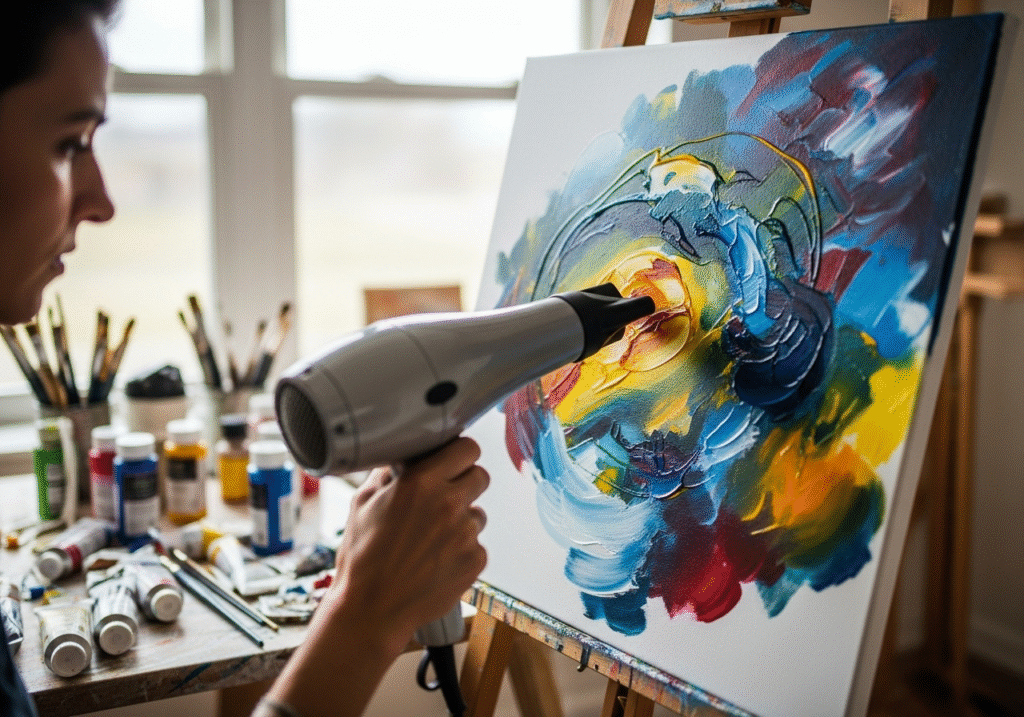
Painting doesn’t always have to be slow and exhausting. With a few clever painting hacks, you can work faster and still get stunning results.
I learned this lesson after spending hours fixing a crooked line that could’ve been prevented with tape. Small changes in how you handle your tools or timing can make your artwork feel effortless.
Here are a few quick wins every painter should try:
- Hair Dryer Trick: Speed up drying between multiple layers using a hair dryer on low heat.
- Tape for Clean Edges: Use painter’s tape or a mask strip to create sharp borders.
- Palette Preservation: Keep leftover colors fresh overnight by sealing your palette.
- Turning Mistakes into Art: Smudge a drip or splatter into a new texture.
Mini Tutorial: How to Seal Your Palette Overnight
- Cover your palette with plastic wrap or place it inside an airtight container.
- Mist it lightly with water if you’re using water-soluble paints.
- Store it in a cool place — your colors will stay soft and ready the next day.
These simple tricks save hours of frustration. A little planning and creativity go a long way in keeping your painting process fun, flexible, and full of surprises.
Cleanup and Storage Hacks

A clean setup keeps your creativity alive. I used to ignore cleanup after long painting sessions, thinking I’d deal with it later.
But dried paint ruined my best brush, and I ended up replacing tools too often. Taking just a few minutes to clean and store everything properly saves money and extends the life of your materials.
Brush Rinse Routine — 4 Simple Steps:
- Wipe: Remove extra wet paint with a rag or paper towel.
- Rinse: Swirl your brush in lukewarm water or use a bit of linseed oil for oil painting cleanup.
- Soap and Shape: Use mild soap, massage the bristles gently, and reshape the tip.
- Dry: Lay flat on a towel.
Storage and Labeling Hacks:
- Store brushes upright once dry, sorted by size or medium type.
- Use labeled jars or sections for acrylic, ink, gouache, and pastel tools.
- Keep your sketchbook, stump, and pencil in one container to avoid damage.
- Add silica gel packets near paints to prevent moisture buildup.
- Label each jar or drawer clearly — this saves time before every session.
Clean tools, clean mind, better art.
Final Thoughts
Using these painting hacks transforms the way you create. You gain better control over your brushstrokes, colors stay vibrant, and even tricky techniques become manageable.
I’ve found that small adjustments in preparation, mixing, and tool use turn frustrating moments into satisfying results.
Every artist should know that working smarter can be just as important as raw talent.
If you’ve discovered your own creative or time-saving hacks, I’d love to hear them! Share your tips in the comments or tag me on social media — let’s inspire each other.
Which hack will you try first in your next painting session?
